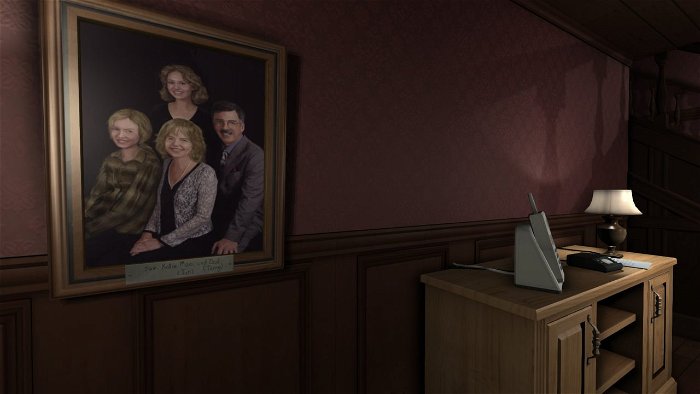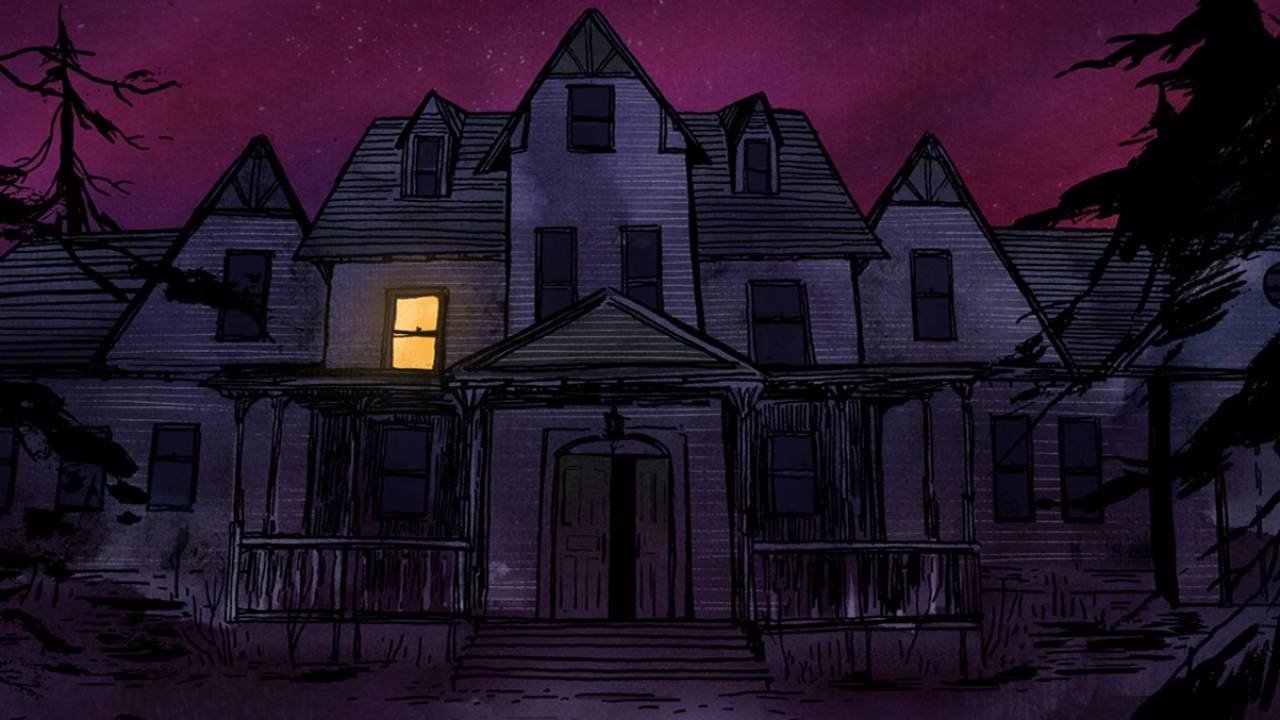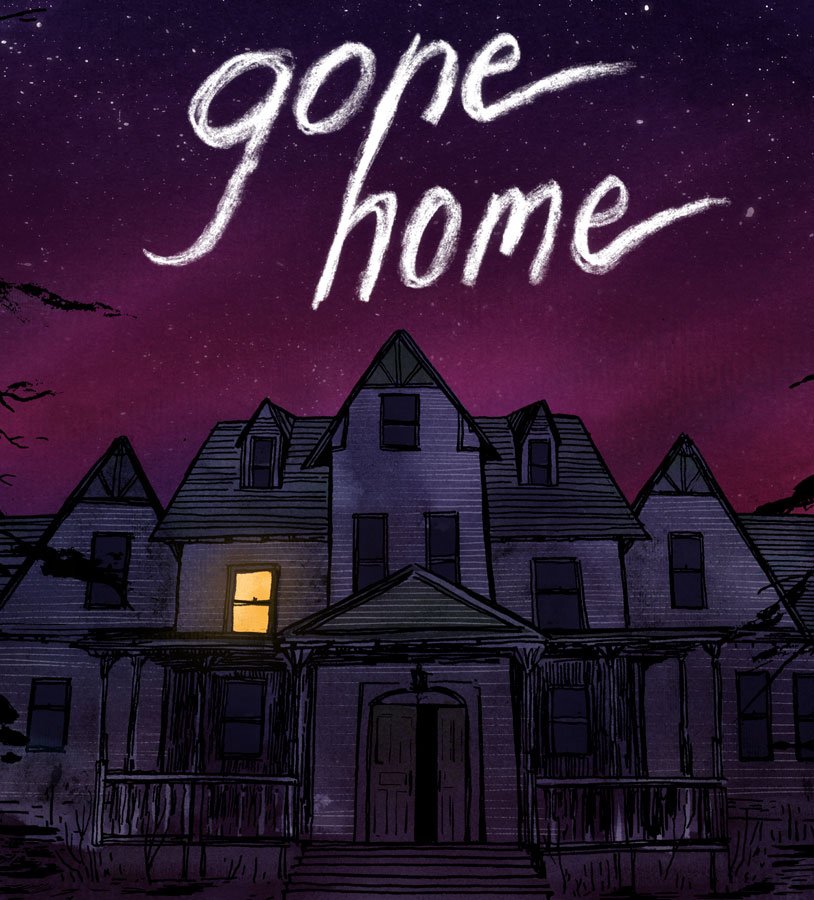Gone Home is the first release from The Fullbright Company, an independent developer from Oregon composed of a small team of industry veterans with previous credits on titles like Bioshock Infinite and Bioshock 2‘s critically acclaimed Minerva’s Den downloadable content. Gone Home, being experimental, highly polished, and extremely effective, serves as a validation of the studio’s apparent goal: using videogames to tell stories without relying on the traditional crutches of combat or puzzle-solving. The resulting gameplay is reminiscent of thechinesroom and Robert Briscoe’s Dear Esther, another title that uses first-person environmental exploration as a storytelling method. The two games may seem similar on a surface level, but differ greatly in their execution. Where Dear Esther was purposefully vague, Gone Home‘s plot is much clearer. The narrative here is not inferred through brief snippets of dialogue and obscured hints, but is drip-fed through much more deliberate pieces of information like family portraits, notes written in all the plainness of ordinary people, and a series of voiced journals from Kaitlin’s younger sister, Sam. The protagonist may start her journey confused as to what has happened to her mother, father and sibling in her absence, but neither she nor the audience stay in the dark for too long.
The Fullbright Company intelligently offers enough immediate context to make their story feel grounded from the start. Only a handful of minutes after stepping into a vast foyer filled with moving boxes, Kaitlin begins discovering clues that fill in the information the player needs in order to care about Gone Home‘s characters and plot. A trip through her father’s office describes twenty years of a man’s career through stacks of books, a few magazines, and a couple of typed pages that have been crumpled up and thrown in a trashcan. This same storytelling method — an interactive take on the “show, don’t tell” principle that informs most good fiction — is used to create a believable framework for the game’s family and their individual motivations. We know what kind of religious beliefs the Greenbriar parents have by riffling through their bedroom nightstands, not by having a character explain it outright. In a few great instances we learn that a character is invested in the mid-’90s riot grrrl culture by leafing through an underground zine she has created and putting mixtapes made by her friend into nearby stereo systems. Fullbright, in light of the team’s Bioshock-related pedigree, is obviously experienced in world-building. This strength becomes most apparent in just how effectively the developer builds a cast of characters that the audience can become attached to.

If the comparison to Dear Esther‘s pioneering brand of slow, walk-and-look gameplay mentioned above makes Gone Home sound a bit dry, it should be noted that experiencing the game firsthand is anything but boring. Fullbright is remarkably economical with their approach to narrative. Kaitlin may be able to open an oven with nothing in it from time to time, but the various bric-a-brac strewn about a given room is never placed without a reason. Each object is used to create a place that feels real; that feels as if actual people have eaten, slept, argued, and cried in it. For every one drawer that opens with nothing in it there are another two nearby that provide crucial bits of plot information. The ultimate result of this refusal to waste space (and, of course, the audience’s time) is a brisk and consistently interesting game.
The efficiency of Gone Home‘s pacing is furthered through the occasional voiced narration by Kaitlin’s sister, Sam. Just when the player could begin to tire of piecing together exactly what the many legal forms, books, and crumpled papers they’ve examined actually mean, Sam begins to contextualize everything through audio diary entries. These moments are placed at regular enough intervals that they maintain a constant connection between the handwritten notes primarily used to tell Gone Home‘s story and the people who actually held the pen. The dialogue also offers a nearly constant series of revelations as to what exactly has happened prior to Kaitlin’s return home.
It’s difficult to talk with any kind of specificity when describing just how effective these moments of clarity are without ruining the sense of discovery that makes Gone Home as special as it is. Suffice it to say that arriving at the end of the game feels quite a lot like completing a well-made puzzle. The story is a masterful display of writing that evokes exactly the dramatic tones, sense of wistful nostalgia, and emotional response it aims for. Videogames have long been criticized for a general failure to provide players with narratives that are as complex or intellectually satisfying as other forms of media. In recent years things have begun to change, but they’ve done so slowly. Journey and Dear Esther shrugged off traditional storytelling techniques in order to envelop audiences in specific moods and suggest plots that are more felt than clearly understood. The Walking Dead and Kentucky Route Zero demonstrate how player choice can influence how a plot unfolds. Gone Home is the next major step forward in proving that videogames are a viable narrative medium with the potential to change how we experience stories. It tells a tale that would not have been more effective if conveyed via a book or film, and it does so in a way that feels natural. This is an incredible accomplishment made even more impressive due to the fact that Gone Home is The Fullbright Company’s first release.

Some may be put off by the game’s short length (roughly two hours) and the lack of any clear objectives other than “explore a house,” but these factors shouldn’t stop them from experiencing one of the most interesting titles in some time. Gone Home is a big moment for the medium — one that is likely to be talked about for a long time to come — and it deserves the attention of anyone who finds the continued advancement of videogame storytelling something worth getting excited over.






